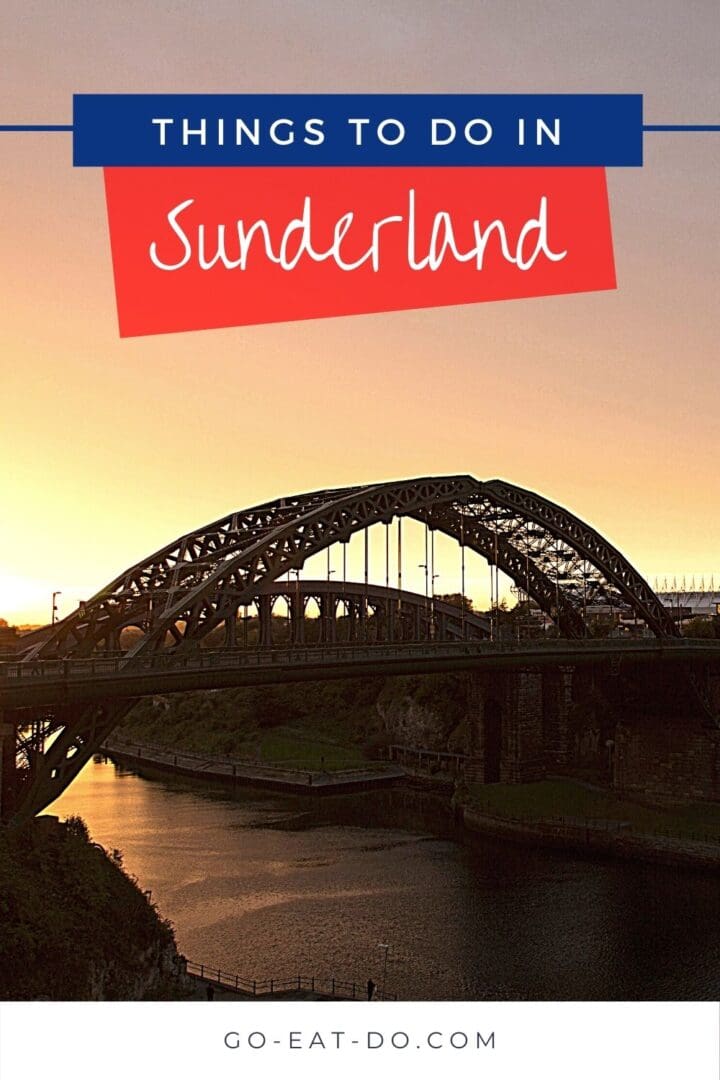Stuart Forster provides an overview of things to do in Sunderland in northeast England.
Penshaw Monument, arguably Sunderland’s best-known landmark, resembles a Greek temple. As you stand on Penshaw Hill you might quietly wish the weather was more like Greece’s.
Disclosure: Some of the links below and banners are affiliate links, meaning, at no additional cost to you, I will earn a commission if you click through and make a purchase.
Even on seemingly calm summer days wind often whips between the columns of the monument. It was built in the 1840s in honour of John Lambton, the Earl of Durham and a Governor-General of Canada. If you have a head for heights you can head to the top of the National Trust-run property on weekends and bank holidays from Easter until the end of September. It’s a good spot for an overview of the surrounding area.
I grew up in Sunderland. Friends have suggested that was a factor in me becoming a travel writer. They joked it was the only way I was going to get into Europe, given the perennial lack of success of Sunderland Football Club.
What do they know? The club have, in fact, finished as England’s champions six times, the same number of times as both Chelsea and Manchester City. However, Sunderland AFC’s most recently finished as champions of England back in 1936.
The club’s last major trophy was the FA Cup in 1973. The story of that unlikely cup victory is told by Lance Hardy in Stokoe, Sunderland and ’73: The Story of the Greatest FC Cup Final Shock of All Time:

Tour Sunderland’s Stadium of Light
If you enjoy football, find out more about the club’s history during a tour of the 49,000-capacity Stadium of Light.
The world’s oldest painting of a football match is displayed at the Stadium of Light. It depicts a game played between Sunderland and Aston Villa in 1895. The first league match played at the stadium saw Sunderland beat Manchester City 3-1 at the beginning of the 1997-98 season.
Want to pick up a football strip or other souvenir? Pop into the SAFC Store, the Sunderland shop, at the stadium.
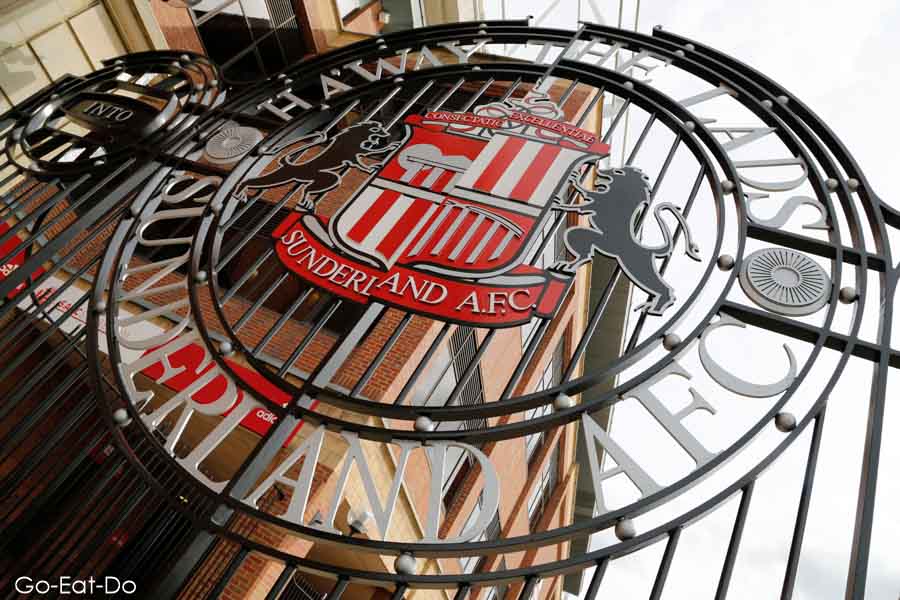
Visit Sunderland’s Fans Museum
From there it’s less than 10 minutes’ walk to the Classical building that formerly served as Monkwearmouth Station. It now houses Sunderland’s Fans Museum, where an impressive collection of match-worn football shirts and club-related memorabilia is displayed – much of it autographed. It’s a good place for a pre-match drink. Thinking about visiting? Check Sunderland AFC fixtures on the club’s website.
The old Victorian railway station stands next to the more recently constructed St Peter’s Metro station. Along with the Stadium of Light Metro station, it will put you within a few minutes’ walk of the football ground.
Walk on the beach In Sunderland
Like the idea of strolling at a Sunderland beach? In fine weather, you could head to the coast and walk along the promenade between Roker and Seaburn. Alternatively, kick off your shoes, if you don’t mind the chill of the North Sea, and scrunch golden sand under your feet while plodging along the shoreline.
A Blue Flag – the international symbol of cleanliness, water quality and high environmental standards – flies above both Seaburn Beach and Roker Beach.
There’s a handful of restaurants by Seaburn’s seafront. The Stack Seaburn opened in August 2020. Resembling stacked sea containers and reminiscent of the Boxpark Shoreditch, it hosts several places to eat and drink. Among the businesses operating there is Downey’s, one of the region’s best fish and chip shops.
Above the promenade, Roker Cliff Park is the location of a Victorian lighthouse that previously stood on the South Pier. Families are likely to enjoy visiting Roker Park (not to be confused with the city’s former stadium), which has a children’s railway.
Explore Sunderland’s East End
To gain insights into the city’s history head towards the East End, the site of Holy Trinity Church, which was consecrated on 5 September 1719.
Inside of the Baroque-style church, you’ll see a statue of Robert Gray, the rector between 1819 and 1838, a man who played an active role in civic matters, plus a painted font. A plaque in the foyer records the heroics of local man Jack Crawford at the naval battle between British and Dutch ships at Camperdown in 1797.
At Sunderland Museum and Winter Garden you can learn about the history of the city and see artefacts relating to the region’s industrial heritage.
The museum’s art collection includes paintings by L.S. Lowry, who spent time painting in the northeast of England.
The domed winter garden, always a good place to warm up if it’s cold outside, houses around 2,000 plant and tree species.
When to visit Sunderland
Around a million people visit the city for the Sunderland International Airshow, held during July. The RAF Red Arrows are a regular fixture at the event, which features aerobatics, parachute displays plus flypasts by historic and contemporary aircraft.
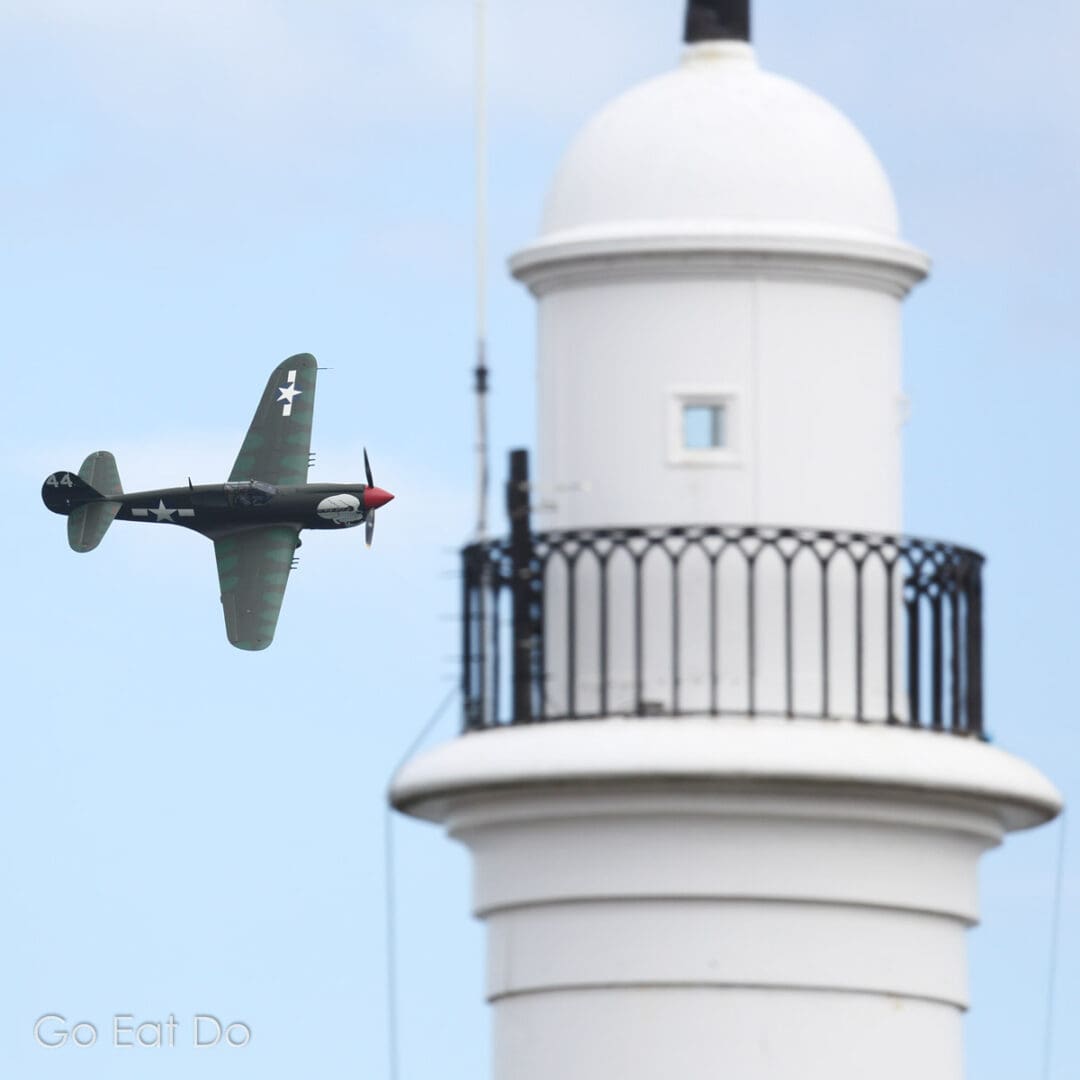
The origins of Sunderland
The origins of the city name are said to hark to medieval times, referring to the ‘sundered land’ across the River Wear from the Wearmouth-Jarrow monastery on its north bank. This part of the city is now known as Monkwearmouth.
Coincidentally, in Hindi the word ‘sundar’ means beautiful. On several occasions while in India, I mentioned my hometown and people muttered “ah, a beautiful place”. You’ll have to visit to decide whether or not you agree.
The oldest building in Sunderland is St Peter’s Church, which has 7th-century origins. It’s possible to see Saxon-era stone carvings on the porch.
The historic place of worship stands on former monastic land that is now the site of the University of Sunderland’s St Peter’s Campus.
Stained glass windows made for the monastery are the oldest in the country. This explains why you’ll find the United Kingdom’s National Glass Centre in Sunderland. The riverside attraction houses a display about Sunderland’s glass-making heritage and live demonstrations of how to make glass. Interestingly, the Sunderland v Newcastle rivalry that is famously manifested on the football pitch stems from a 17th-century industrial rivalry relating to making glass.
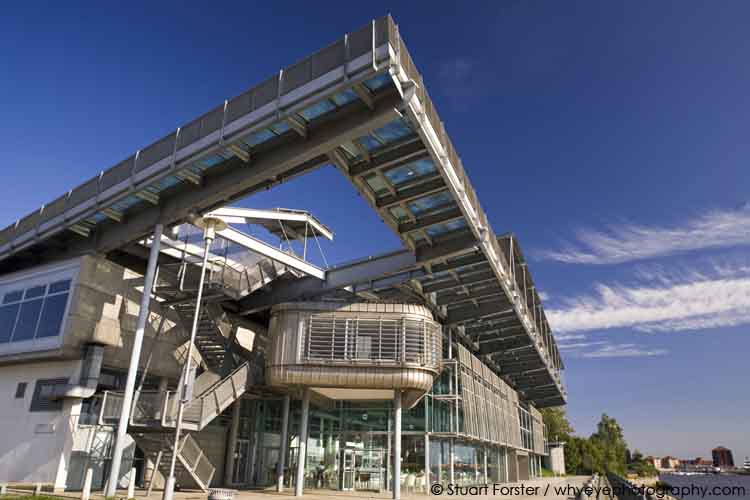
Best pubs in Sunderland
I’m a fan of good beer and have enjoyed pints in the following Sunderland pubs:
The Kings Arms on Beach Street in Deptford stands across the River Wear from Sunderland’s Stadium of Light. It had a laid-back ‘proper pub’ atmosphere. It has a wood-panelled bar and a couple of fires to sup beer by on chilly evenings.
If you enjoy viewing football memorabilia, check out the photos and illustrations on the walls. There’s also an example of the wooden seating formerly used in Roker Park, Sunderland AFC’s former home ground. The Kings Arms is a decent spot for a post-match pint of Timothy Taylor’s Landlord or one of the ever-changing guest beers. Many of the draught beers are from breweries in nearby Durham and Northumberland. I once said that if it wasn’t for the lack of an apostrophe in the name of The Kings Arms I’d be tempted to name it the perfect pub.
The Engine Room at The Fire Station, a converted building that once housed Sunderland’s city centre fire engines, is also a good pub. On High Street West, The Engine Room doubles as an arts venue and is a good shout for attractively served pub grub.
The Dun Cow (9 High Street West) stands opposite the Sunderland Empire theatre, so is well-located for meeting ahead of shows. The Edwardian pub underwent a major restoration in 2014. It’s worth popping in to take a look at the intricately carved woodwork behind the bar. While you’re there you might as well sample the hand-pulled ales.
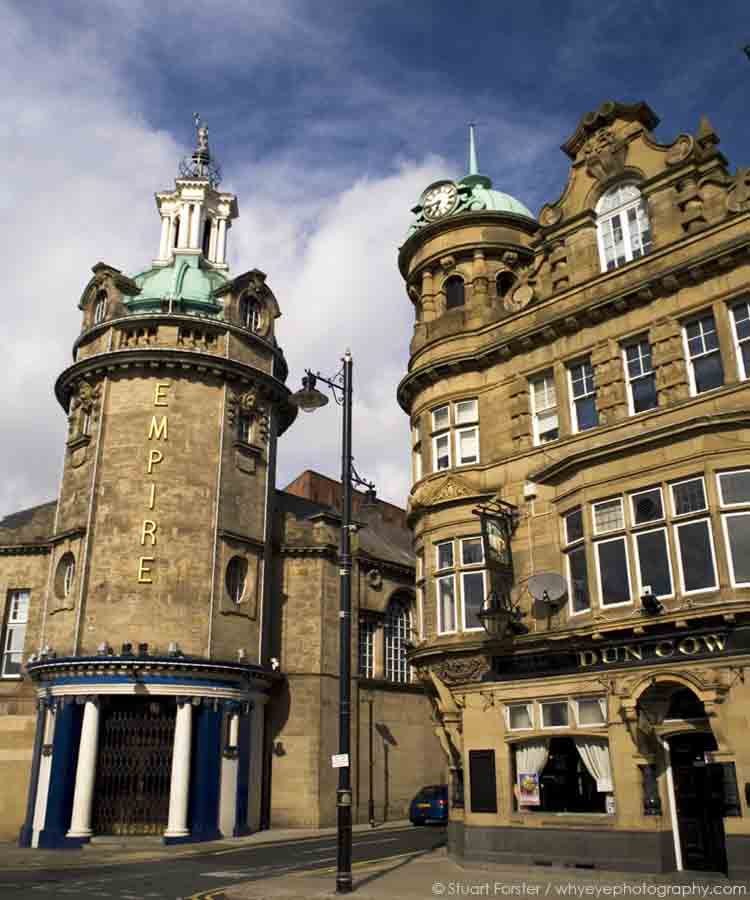
Places to eat in Sunderland
City centre Sunderland restaurants include establishments serving Italian, French and British cuisine. Asiana Fusion Restaurant serves pan-Asian dishes.
No 2 Church Lane and The Spice Empire Indian restaurant is well placed for dinner ahead of a show at the nearby Sunderland Empire theatre.
If you’re in the vicinity of Herrington Country Park swing by The Stables (McClaren Way; tel. +44 (0)191 5849226) for lunch. Better still, book a table well in advance and hope you pick a fine day for a walk in the landscaped park – if not you can experience an afternoon of real ale. This is a country pub packed with bric-a-brac and atmosphere. The menu includes modern British dishes as well as tasty international bites. The chicken liver pate and mussels in Thai sauce are two standout options.
Getting to Sunderland
Grand Central runs a direct rail service between London Kings Cross and Sunderland. The duration of journeys on trains to Sunderland is approximately 3 hours 30 minutes.
The journey from Newcastle International Airport to Sunderland takes 52 minutes on the Tyne and Wear Metro. The Metro journey from central Newcastle to Sunderland takes approximately 27 minutes.
Looking to travel further? Station Taxis operates from a taxi rank next to Sunderland Station in the city centre.
National Express coaches and buses to destinations across the region depart from Sunderland Interchange at Park Lane.
Hotels in Sunderland
Looking for a hotel in Sunderland? The Grand Hotel Sunderland (Queens Parade), on the seafront at Seaburn, has 82 rooms, a pool and fitness room plus an on-site restaurant and bar. The Premier Inn Sunderland is at Hind Street, a short walk from the city centre.
Search for other guesthouses and hotels in Sunderland via Booking.com:
Booking.com
Map of Sunderland
Where is Sunderland? The map below shows Sunderland’s location in the northeast of England. For a more detailed Sunderland map zoom in for further details and to find the location of attractions in and around the city:
Books about Sunderland
Want to find out more about the city? You may find the following books worth buying:
The Funniest Sunderland Quotes…Ever by Gordon Law:

Michael Johnson’s book Sunderland in 50 Buildings examines aspects of the city’s architectural heritage:

Sunderland Through Time is by Keith Cockerill:

Secret Sunderland is by Marie Gardiner:

Marie Gardiner is also the author of Sunderland, Industrial Giant: Recollections of Working Life:

Further information
Visit the SeeitdoitSunderland website for further ideas on what to see and do in Sunderland.
Photos illustrating this post are by Why Eye Photography.
Stuart Forster lives is an award-winning freelance travel writer who lives in northeast England. His work has been published by The Independent, Rough Guides and National Geographic Traveller.
If you enjoyed this post why not sign up for the free Go Eat Do newsletter? It’s a hassle-free way of getting links to posts on a monthly basis.
‘Like’ the Go Eat Do Facebook page to see more photos and content.
A version of this post was first published on Go Eat Do on 23 August 2015.
